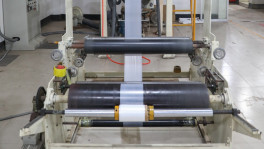Approaching 30? Apparel industry no longer needs you
According to a 2020 study titled A Survey Report on the Garment Workers of Bangladesh, conducted by Asian Centre for Development (ACD), the average age of workers in the RMG sector in Bangladesh is 25.9 years

At eight o'clock in the morning, Mosammat Mala Begum, 36, sets out from her semi pucca rented house at Kalshi in Mirpur, Dhaka. As she makes her way through the narrow alley of her shabby neighbourhood, she is joined by seven or eight other younger women. Together, they walk towards the end of the Kalshi road, where it meets Begum Rokeya Sharani, popularly called Mirpur Saare Egaro.
Even though the women head the same direction, their destination is not the same. The younger women are on the way to their garment factories near Purabi Cinema Hall, while Mala is going to an apartment building in the vicinity.
It was not the case six years back. Not exactly so, that is.
Back then, Mala too worked at an RMG factory near Purabi Hall. She had started working for the factory when she was only 13. She was married off in the same year.
Fast forward 17 years, one day, the owner of the factory informed Mala and 14 of her co-workers – all aged between 25 and 32 – that the factory management was letting them go.
"Older people cannot work in garment factories as owners throw them out for different reasons," Mala said.
According to a study by the Asian Centre for Development (ACD), the average age of workers in the RMG sector in Bangladesh is 25.9 years.
Although Mala and her co-workers were relieved of their jobs at the factory, the owner gave them a choice. They were offered RMG jobs in a factory in Jordan with work visa. They would have to pay only for the air ticket.
All the 15 workers weighed the proposal, and agreed. Mala received a severance package of Tk60,000 from her employer, which she spent for the air ticket.
The women worked there for three years, and then returned to Bangladesh on three months' leave.
Mala had five daughters, including a 6-month old, when she left the country. The older ones took care of the baby when she was away. As she came back, she felt it was enough, and decided to stay in the country for the family.
Mala knew that at her age, she wouldn't find another job in the same sector. She stayed at home taking care of domestic affairs for some time. But people with low income cannot afford to stay unemployed for a long time.
She started working as a house maid in Mirpur area. She has been doing this for the last six years.
From morning to evening, she works at eight different apartments as a part-time maid.
The story did not end up the same way for her co-worker Laily Begum who also went to Jordan for work.
She too left two small children at home while going to Jordan. In her absence, her stay-at-home husband took care of their kids.
As Laily returned to Bangladesh on leave, her husband asked her to stay back, but she decided otherwise.

As she went back to Jordan, her husband remarried.
Laily returned to the country after serving in Jordan for two more years. Now a single mother, Laily sells vegetables on a road-side cart. Her elder son, 14, who is no longer studying, helps her in the business. The younger one goes to school.
Not everyone gets a chance to extend their career in a foreign land like Mala and Laily, of course.
Kauser Mia used to work at an apparel factory in Gazipur. When he was fired, he had to go back to his rural home in Nilphamari.
Could it be called a rural home? Was it even in Nilphamari? I met him in a shoal in the middle of the river Teesta, a few kilometres downstream from the Teesta barrage, located between the districts of Nilphamari and Lalmonirhat. Which district does a temporary, sandy river shoal belong to, that does not last past the next monsoon flood?
There, Kauser joined hands with his family members, fighting to earn a living. The family cultivated some land to grow corn and paddy in the dry season, raised some cattle, and did this and that.
Kauser was telling me how, in every monsoon, the family had to shift their tin-shed home as the shoal got inundated, and eroded. The shifting is usually done in exchange for a cow as cash is scarce.
Cash. This is what a livelihood in rural areas does not give much. Even the infertile land of the sandy char provides ample opportunities for growing some crops or raising some cattle to meet family needs, but for cash, people have to look for jobs in the town. Kauser's case was no different.
"I'm trying to find work in the adjacent towns, and have maintained communication with my friends and former colleagues in Gazipur, but to no avail," Kauser said.
Workers having to leave the RMG often go back to square one, and find themselves working in the informal sector again, the workers said.
No place for old men (and women)
According to a 2020 study titled A Survey Report on the Garment Workers of Bangladesh, conducted by Asian Centre for Development (ACD), the average age of workers in the RMG sector in Bangladesh is 25.9 years.
The average age of female workers is even lower: around 25 years while the number is around 27 years for male workers.
However, the study found that the people employed in higher grades can work for a longer span of their life.
Another baseline study report titled "Improving Working Conditions in the RMG Sector" published by the International Labour Organisation (ILO), the research for which was conducted by South Asian Network on Economic Modelling (SANEM), shows that 85% of the workforce are aged between 18 and 30 years. Also, workers aged 18-35 years make up 94.4% of the workforce.
A whole bunch of factors at work
The early retirement of RMG workers can be attributed to a diverse mix of reasons.
While the workers we interviewed clearly mentioned that they would continue working for the sector for many more years had they got a chance, the owners in the industry appear to be under the impression that the workers earn so well that they find it suitable to retire early. They also tend to showcase a handful of middle aged workers to prove that the RMG's overreliance on the youth is a myth.
However, some RMG insiders said that the nature of the work takes its toll on the workers at a relatively early age and that prohibits the workers from continuing work beyond a certain age.
"The workers suffer from backache and other physical problems arising from the posture they need to maintain for long hours," said a highly placed management official working in the RMG industry who would not give his name.
Physical strength is key, he said, adding, the number of male workers in the industry is increasing day by day. Of course, increased pay also contributes to the rise, he mentioned.
The above mentioned studies did find that the average age of male workers was higher than the female.
The official claimed that workers are not actually fired because of their age, but they 'resign' after failing to meet production targets.
He also said that fainting during work was a serious problem among garment workers in the past, but the situation has now improved a lot thanks to better wages and improved nutrient intake.
The Sanem study too mentions that the detrimental health impacts of working long-term in RMG factories lower the proportion of women workers beyond a certain age, which of course, does not explain why the average age of male workers, although higher than female workers, is still very low.
The family responsibility and domestic chores place a more onerous burden on female workers than their male counterparts, which is typical of working women from all sectors.
"We, women, don't only work in the factory. We cook at home, feed our children and other family members, do the laundry and all the chores. We work day and night," said Laily, the RMG worker-turned-vegetable seller.
Mala, the other female worker who we interviewed, said that in the past, apparel factories were not very choosy about the physical fitness of the workers. Now that the pay is better than before, the sector is attracting a lot more people wanting to work in this sector, allowing it to employ healthier and younger workers.
She also mentioned that the factories have to pay the younger workers less, and also the job benefits or severance package that the factory has to pay to the outgoing worker is also lower if they are forced to retire early.
Of course, the service benefit is not always given in accordance with the law, insiders admitted.
Replying to a question regarding why older people cannot continue working in the apparel industry, Abdullah Hil Rakib, a director of BGMEA said that when workers manage to have a good savings, they buy land in their village home and leave their job to start doing farming and other stuff.
"In this industry, there is still room for an additional 10 lakh skilled workers. But there is a lack of skilled ones. Skilled workers are never out of work. If a tiny portion of the workers go back to square one, as you pointed out, you can't blame the industry for that," concluded the director over a Whatsapp call, who was attending a conference in the USA.


 Keep updated, follow The Business Standard's Google news channel
Keep updated, follow The Business Standard's Google news channel
















